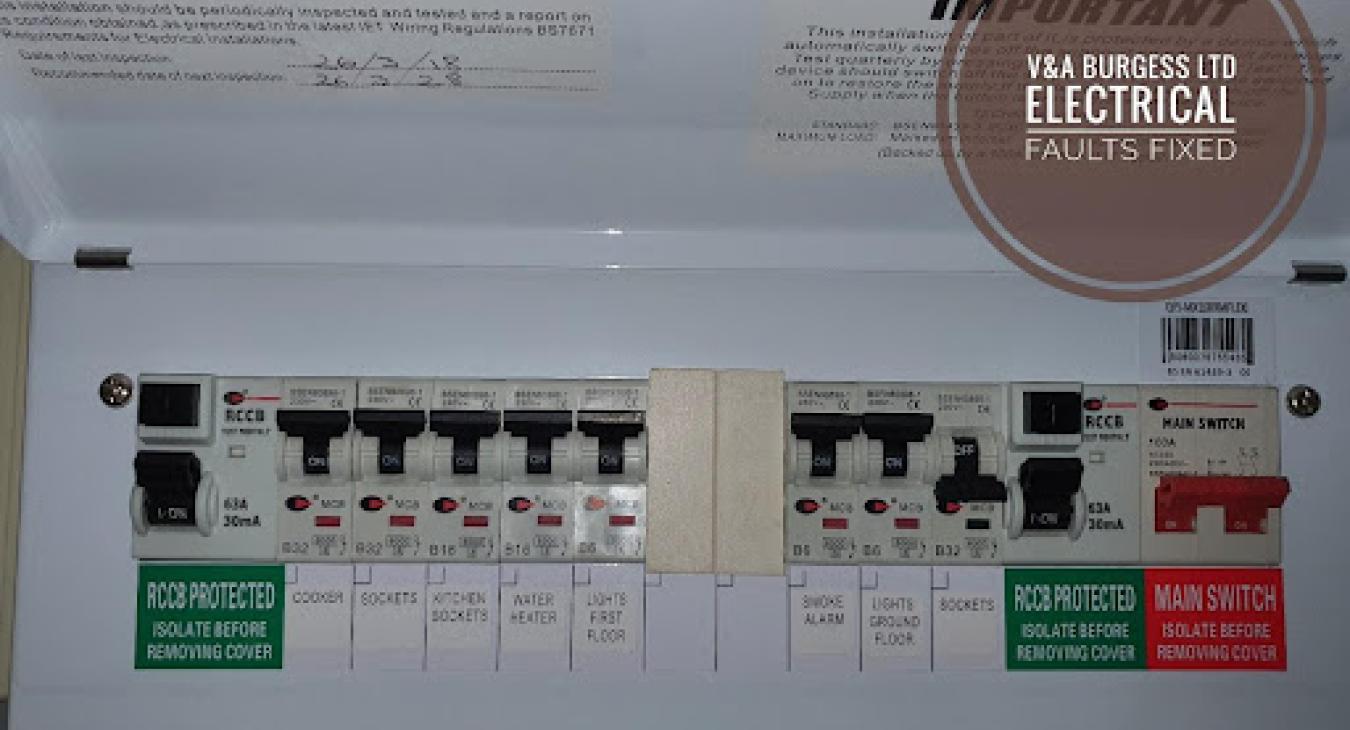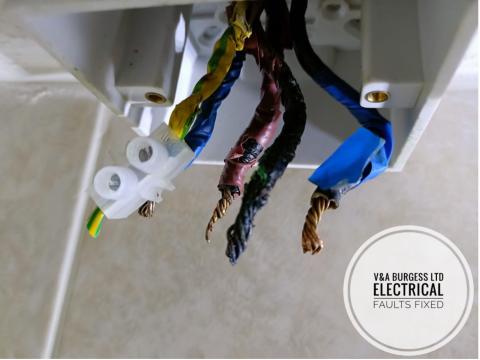
The consumer unit is responsible for splitting up the incoming electrical supply into different circuits and then distributing this around our homes safely. Each consumer unit can be slightly different so we will be looking at the one in the photograph. Each of the electrical circuits has its own ‘trip switch’ and monitoring each bank of trip switches is another double width ‘trip switch’. Each of these switches has a different name and performs a different purpose in line with the design of the system selected by the electrician that installed it. When we TRIP A SWITCH, it is because something has happened that the brains of the system didn’t like.
Back to top2) What types of trip switch are there?🤔
2.1) Main switch
From the photograph we can see at the far-right hand side of the consumer unit we have the Main Switch. This device is not designed to trip in this consumer unit but rather act as a point of isolation for the entire consumer unit. There is occasionally a separate ‘main switch’ outside of the consumer unit to fully isolate the electrical supply into your home and occasionally not. The main switch in the consumer unit is used to stop the electricity supply to all circuits.
Back to top3) RCCB
The Residual Current Circuit Breaker is a form of Residual Current Device (RCD). These devices are the most common form of electric shock protection for electrical installations. They work by detecting missing electrical current in the system such as would be the case if electricity was flowing through a person and leaking to earth. Once a sufficient level of electrical current is detected as ‘missing’ the device will turn off the electricity supply to the circuits which it protects and supplies.
There are two of these devices in this consumer unit and although we are now moving away from this type of consumer unit towards more updated technology, these devices are still effective in a lot of installations. It may be necessary to have your RCCB, RCD, RCB tested and updated by your electrician to ensure that they are working and still offering suitable protection to your home and its occupants. Modern electronic equipment can adversely affect these devices and as such it may be necessary to have them swapped for a newer, more modern type.
These devices do not offer any overload or short circuit protection.
4) MCB
The Miniature Circuit Breaker is a device that sits at the beginning of each electrical circuit. We can see from the photograph that there are 8 miniature circuit breakers in this consumer unit. Each of these will have a different rating depending upon the circuit design constraints and the intentions of the electrician that installed them.
These devices themselves do not offer any electric shock protection but offer overload and short circuit protection to the circuits. They predominantly protect the electrical cabling from excessive electrical current / power draw and will be installed such that we TRIP A SWITCH long before cable damage occurs in the system.
5) RCBO
The Residual Current Breaker with Overload does the job of an RCD and an MCB together. There are none of these in the consumer unit above but these types of devices offer the very best in protection and convenience and, at the time of writing, we are moving towards these devices in consumer units rather than the MCB / RCD combinations.
Back to top6) What kinds of issue can trip a switch?⚠️
As we have seen, there are different kinds of trip switch and each will trip for different reasons. We look at common issues that can cause a switch to trip and why.
- Line to Neutral problems – When there is a short circuit, that is, a low resistance path between Line and Neutral such as two wires touching such as faulty wiring at a socket, then a large electrical current flows in the circuit. This type of issue would be detected by an MCB device which should trip almost instantly with a BANG to shut off the electricity supply and protect the cable from damage.
- Too many appliances being used – Just because we have multiple sockets around the home does not mean that we can plug a heavy appliance like an electrical fan heater into each one. The more power-hungry electrical appliances that we use, the more electrical current flows in the circuit and the likelihood of a device tripping increases. When too many appliances are being used then the MCB device will trip again, this time the MCB wont trip with a BANG but rather a gentle click off. This gentler motion is to do with the fact that the device is not dissipating a large fault current as with the Line to Neutral problem above.
- Electric shock occurring – If Someone in the property is receiving an electric shock and the correct RCD device is installed and working then this device should turn off the supply to the affected electrical circuits. This depends upon how well maintained the electrical system is and the correct device being installed and working.
- Water ingress – This type of issue is normally dealt with by an RCD although it can occasionally cause an MCB to trip. When water enters an electrical system, it affects the wiring and electrical accessories and allows a bridge to occur between Line – Neutral and Earth and this can trick an RCD into thinking someone is receiving a shock. If the circuit breaker blows first then it is likely the fault lies between Line and Neutral.
As we can see from the above information. There are many issues that can TRIP A SWITCH and without an experienced electrician with the correct test equipment it can be difficult to pin a fault down in an electrical system. Check out our blog for more information on all things electrical.
Question? Get in touch with our friendly team of electricians in Liverpool today.
📞 01925 595 980 (Warrington)
📞 0151 351 4011 (Liverpool)
📧 Enquire online
💻 Visit our website
Back to top









